What makes Phantom Manor a candidate for Modern Marvel status? To our thinking, it innovated upon the Haunted Mansion formula in three key ways: Setting, Sounds, and Story…
1. SETTING – France Goes West
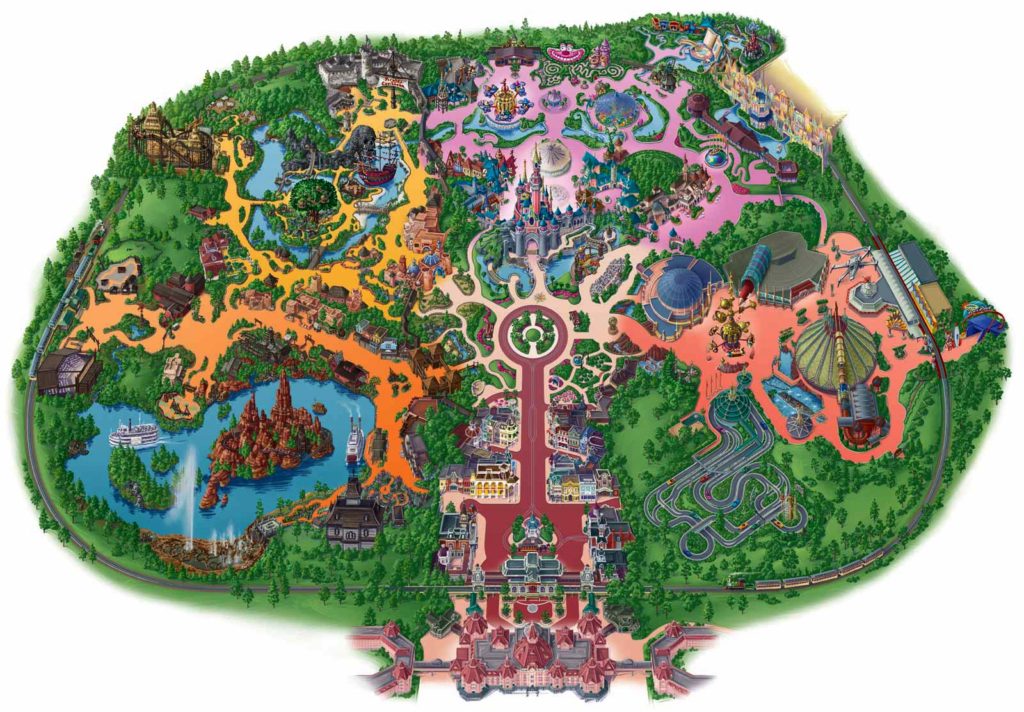
When Disneyland opened in 1955, Frontierland was a response to American pop culture and our collective fascination with the West. It was a time when The Lone Ranger and Davy Crockett owned the television screen, and kids spent their days playing Cowboys & Indians and their nights watching Howdy Doody.
Designing another Frontierland based on the dated pop culture icons of 1950s America wouldn’t be of much interest to Europeans, but there is a sort of deep and enduring facsination across Europe with the romance of the American West (which is why all seven of Disneyland Paris’ hotels are themed to regions of the United States, and four of the seven are set west of the Mississippi). For that reason, Frontierland wasn’t a dead concept… just one in need of a French reinvention.
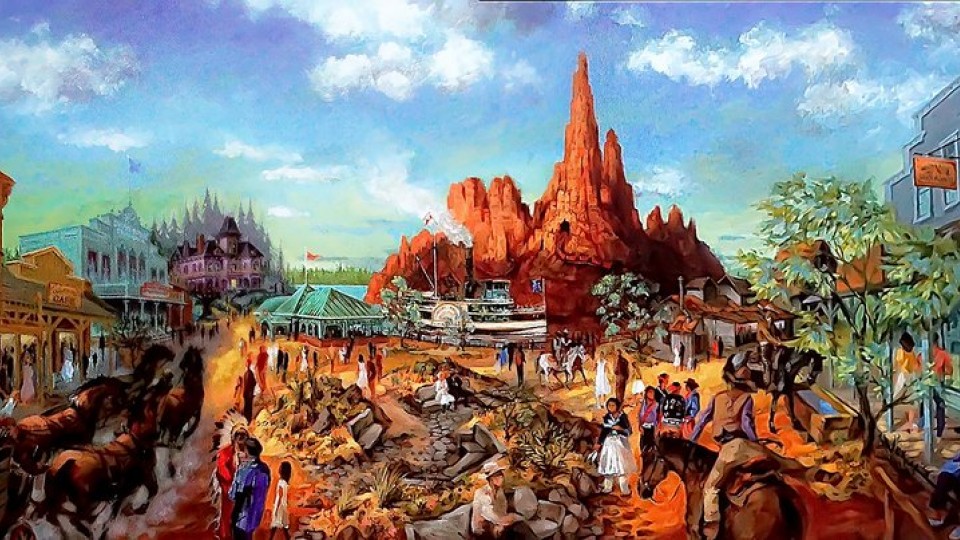
And thanks to Tony Baxter and the land’s executive producer Jeff Burke, it got it.
Forget the idling, sleepy “living history” village you know. Europe’s Frontierland doesn’t allude to mid-century American heroes like Davy Crockett and the Lone Ranger. In Paris, Frontierland was reimagined from the ground up, emphasizing the epic, cinematic, romantic, and adventurous spirit of the West – the wide vistas, oversaturated peaks, archetypical outlaws, and dashing heroism of spaghetti Westerns.
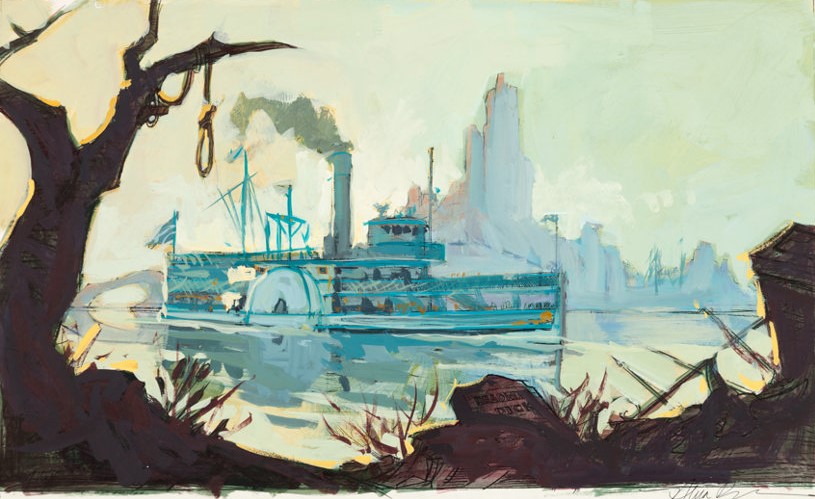
It’s a Frontierland not based on the “hard facts that created America,” but on the legends and folklore of the Wild, Wild West, “truth” be damned.
Since it had been Baxter’s own Big Thunder Mountain that had revived the otherwise sluggish Frontierlands in California, Florida, and Japan, it’s no surprise that in France, his team would seize on their first chance to master-plan the land with his runaway mine train from the start. That’s why it was given a prominent position, essentially replacing Tom Sawyer Island in the center of the Rivers of the Far West. But a more epic, picturesque spot for the beautiful Monument Valley mountain range wasn’t the only upgrade.

By the way, it’s no accident that Phantom Manor has a lot in common with that Queen Anne style haunted house envisioned by Herb Ryman four decades earlier… the uniquely Western home style was revived for its role in France’s Frontierland as a living testament to the original, never-built mansion at Disneyland.
2. SOUNDS – Grand Grinning Ghosts
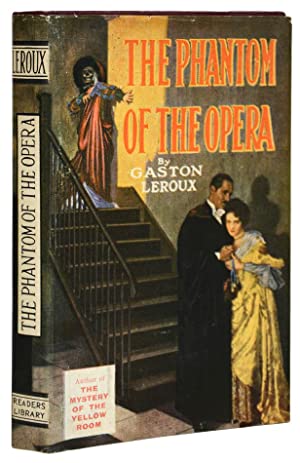
There’s no denying the connection between Phantom Manor and Gaston Leroux’s 1909 novel Le Fantôme de l’Opéra. The Gothic French tale tells of a masked, disfigured “Phantom” who dwells deep in the ghostly catacombs beneath the Paris Opera House, yearning for the affection of the beautiful soprano over whom he holds supernatural sway. hich make it literary and historic and story-focused in a way the original Haunted Mansion simply wasn’t meant to be. But that also make it inherently musical.
To elevate the concept of the Haunted Mansion from its humble origins into the cinematic, romantic realm of Tony Baxter’s Disneyland Paris, music would be key.
X Atencio and Buddy Baker – lyricist and composer of the original “Grim, Grinning Ghosts” – had created an unforgettable singalong tune that was elevated to the top of the Disney Parks songbook, but the deeper, darker, more grounded story of Phantom Manor required a deeper, darker, more operatic sound.

And voila… a new original score (viscerally based on “Grim, Grinning Ghosts”) was composed and orchestrated by John Debney and remains some of the most gorgeous music in any Disney Park on Earth. The suite composed for Phantom Manor is sweeping; visceral, and eerie. And – until the somewhat non-sequitor insertion of “Grim, Grinning Ghosts” itself partway through –sounds and feels like its own thing entirely.
Replacing our “Ghost Host,” the opening, cinematic narration was originally recorded by the legendary Vincent Price (horror actor and voiceover artist extraordinaire, known in no small part for his narration of Michael Jackson’s Thriller) in one of his final roles before his death.
Just before the park opened, though, the decision was made to keep Phantom Manor fully in French, so Disney brought on Gerard Chevalier (who had providing the French dubbing for Price in some of his movies) to rerecord the soliloquy, seemingly dooming Price’s version to be lost to time. (Hold that thought…)
3. STORY – Legends of the West
While Jeff Burke developed the park’s Frontierland setting and John Debney handled the attraction’s uniquely cinematic sounds, it was left to show writer Craig Fleming to concoct a mythology.
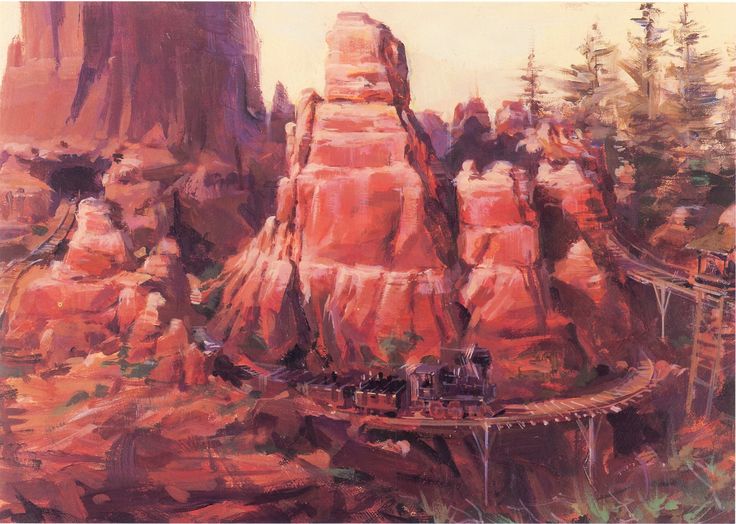
Welcome to the bustling town of Thunder Mesa. Every square foot in this sunset-hued Western outpost is financed, owned, and overseen by the Thunder Mesa Mining Company and its dearly departed founder, Mr. Henry Ravenswood. It was Ravenswood who first arrived here years ago and found the towering geometric spires of Big Thunder Mountain teeming with pockets of gold deposits. Though natives warned that the mighty Thunder Bird roosted deep inside and that disturbing it would unleash its earth-trembling wrath, Ravenswood established a mining operation, drawing westward travelers to establish the town.
Upon striking it rich, he commissioned the construction of his own private estate to be built just outside of town on Boot Hill. The lavish Victorian Second Empire mansion proved the perfect nest of his own for raising his beautiful young daughter Melanie, born in 1842.
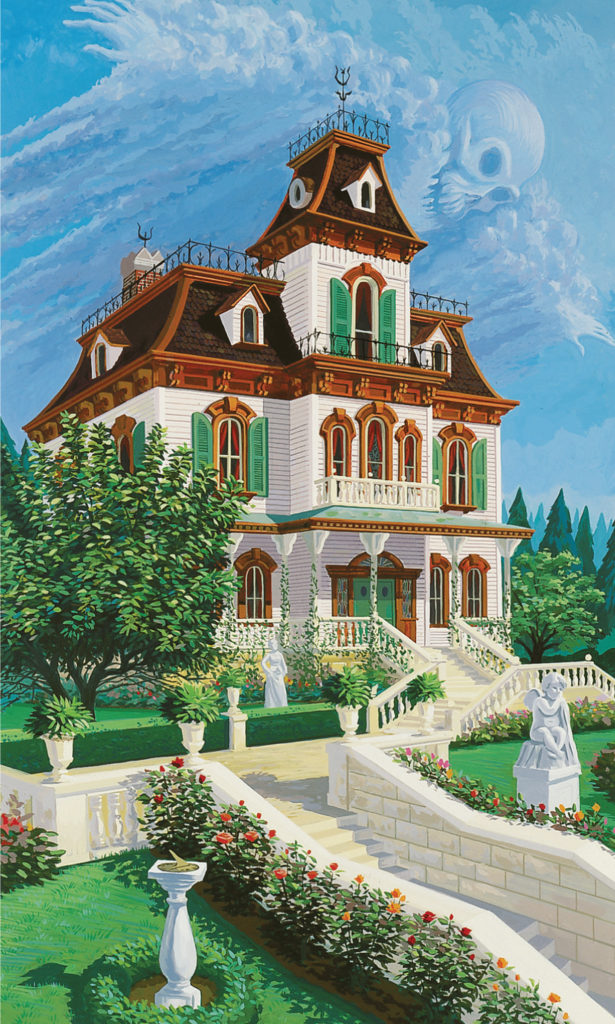
As Melanie grew into a beautiful young woman, a lowly miner working across the river in her father’s mines caught her eye. Mr. Ravenswood was enraged when the young man promised to take his daughter far away, and as the gold inside Thunder Mountain dried up, he forced the mining operation deeper and deeper into the legendary peak. Ravenswood flew into a jealous rage when Melanie and her suitor became engaged, vowing to stop the wedding… until something stopped him.
One pickaxe too far, the sound of rolling thunder emanated from the blazing red mountain, and a great earthquake fractured away part of Thunder Mesa and Ravenswood Manor. The miserly old Mr. Ravenswood and his wife were never heard from again.
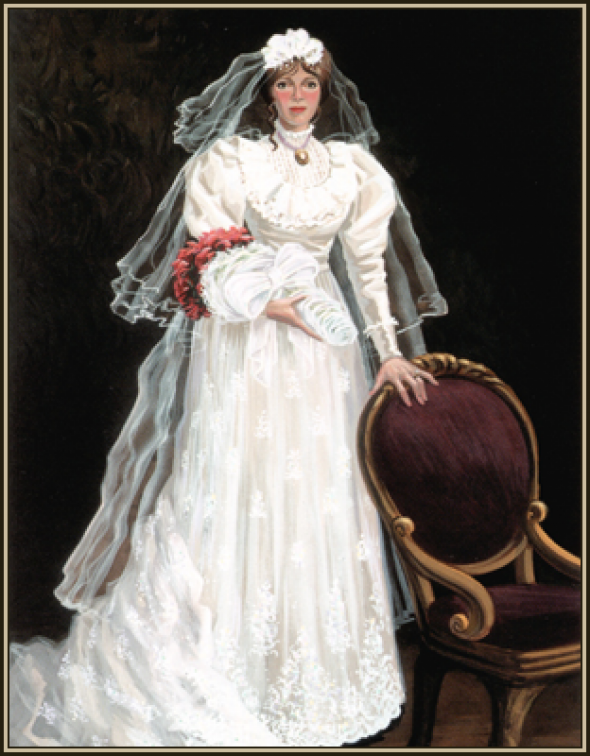
Free from her father’s grasp, Melanie and her love planned to marry… but on their wedding day, her would-be husband was found hanged from the rafters, the victim of a mysterious, shadowed Phantom who – some say – was Mr. Ravenswood’s vengeful spirit returned to the mortal coil.
Cut off from Thunder Mesa, the old Ravenswood Manor fell into a state of rot. Mold and decay overtook the home, the plants surrounding dried out, and an unnatural gray silence overtook the property and the fractured, earthquake-destroyed part of town beyond. Before long, stories of this ‘Phantom Manor’ spread and it’s said that nothing living ever trod there… The deserted half of Thunder Mesa beyond Boot Hill was simply abandoned. Locals say that on quiet, cold nights, you can still hear Melanie’s mournful song twinkle across the misty waters of Thunder Mesa as she waits until Judgment Day for her long-lost love…
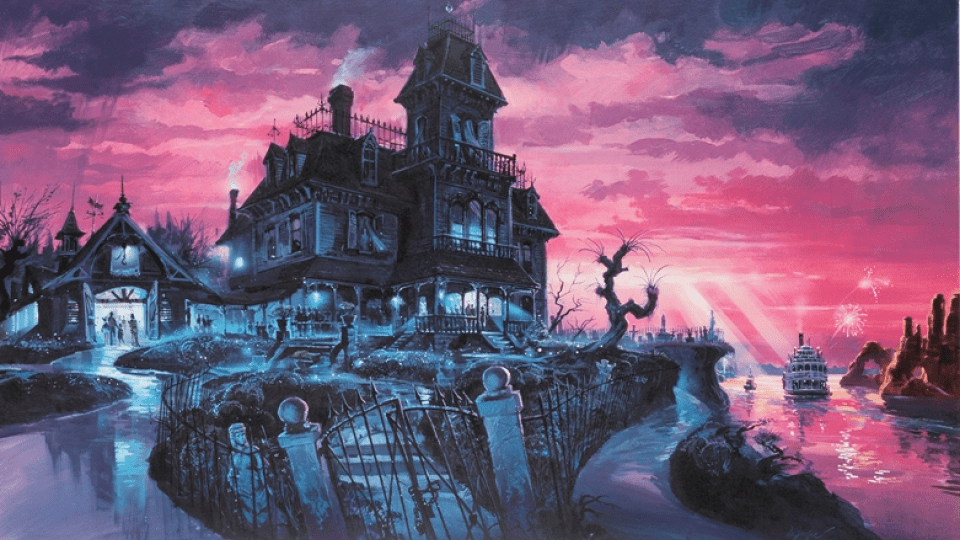
With the story set, it’s time to witness the unbelievable beauty, romance, tragedy, and turmoil cursed to continue for all eternity inside Phantom Manor… On the next page, we’ll begin our descent and explore how the Haunted Mansion standards originally looked when it found new life in Paris…



